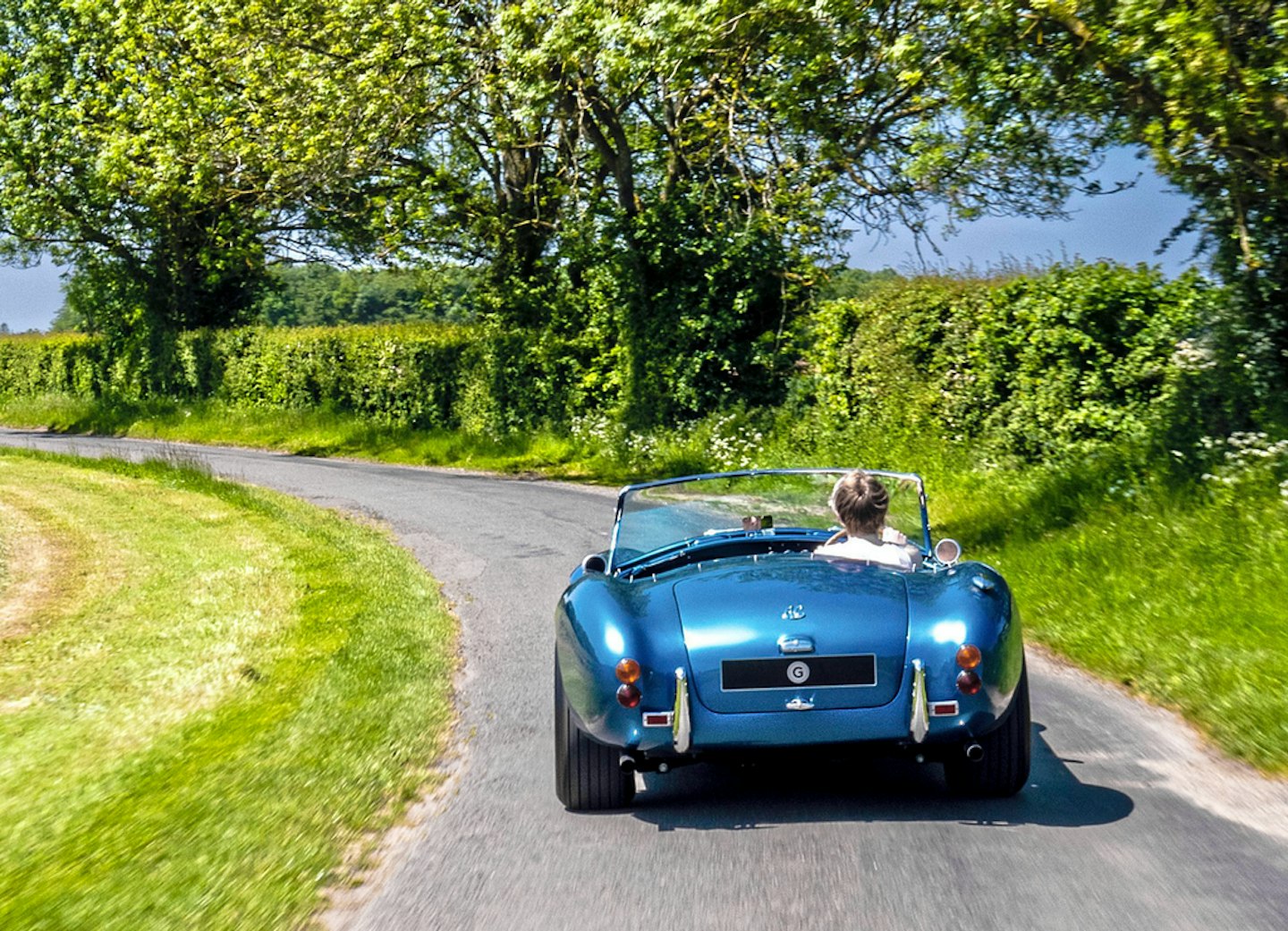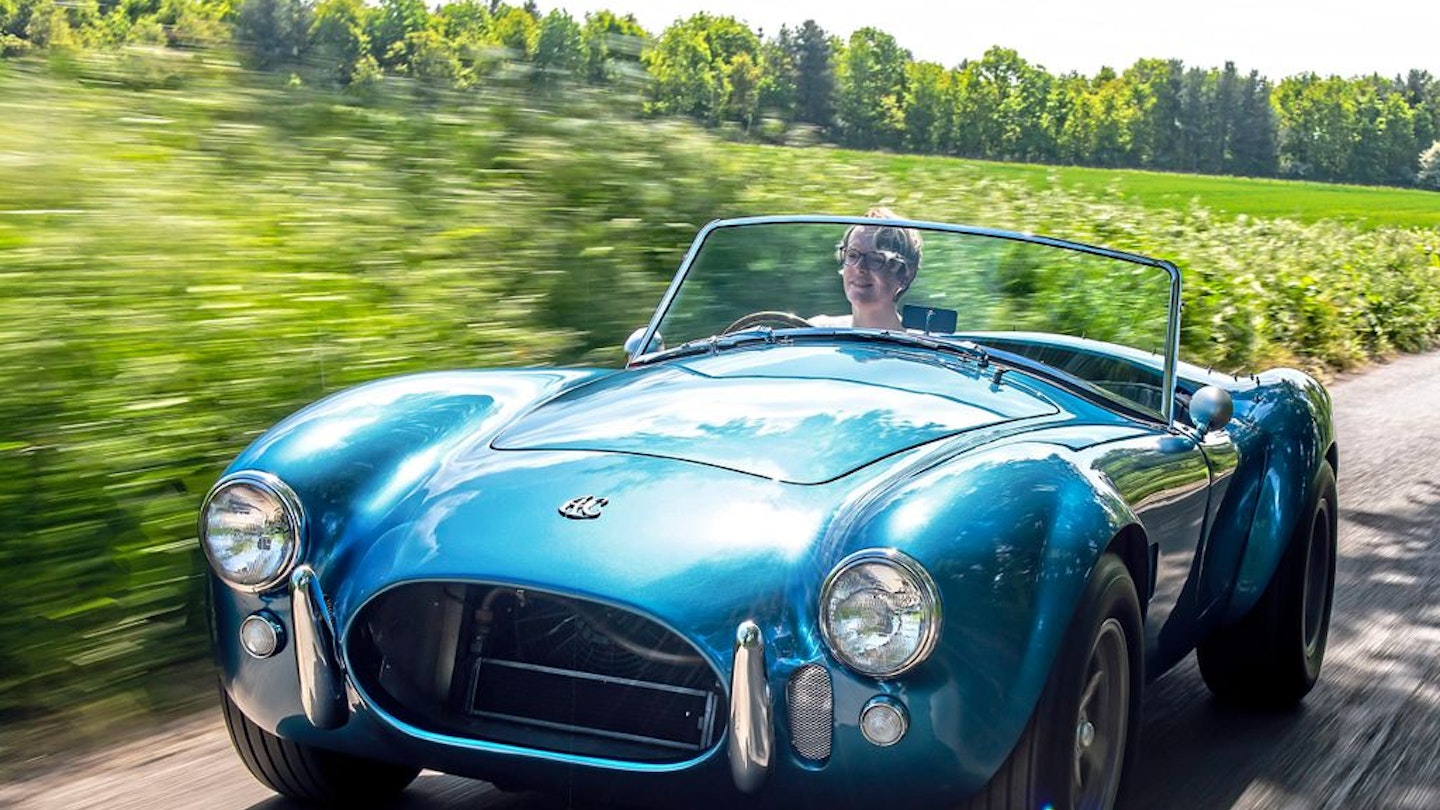[DRIVEN] AC 289 Sports
The 1967 AC 289 Sports wears no Cobra badging, but it sang the swansong for the original speed-crazed snake. Just 27 were made –we drive the final right-hand-drive example built
Words EMMA WOODCOCK Photography IAN SKELTON

Ka-BOOM. Thunder claps through the 1967 AC 289 Sports. The seat shivers and my sternum aches under the weight of a chewing idle. Dense sound floods from every direction with warm, rounded texture and bass that I feel as much as hear. One hand hooks around studded wood, my thumb resting against the flared and shining spokes of that iconic steering wheel. The other cracks left then forwards in tight stabs – planed shifter ball still cold in my palm – and punches into first. I hold my hip against sharp weight and the exhaust note grows, then flattens, then hardens as the roadster keens away. One word forms on my lips. Cobra.
Yes it is, and no it isn’t. You see, COB 6124 boasts the Ford 289 Hi-Po V8 that built the MkI and MkII Cobra legends on road and track alike, allied to the strengthened, coil-sprung chassis designed for the 7.0-litre might of the 1965-onwards MkIII Cobra 427, yet it and every other 289 Sports never actually staked a claim on the legendary name. Its Guardsman Blue coachwork and leather-lined cabin go without a single snake motif, confirming through their absence that Carroll Shelby bore no direct involvement with this AC Cars project.
It’s tough pinning any importance to what’s printed on the paperwork when my wrists are aching against tight, heavy steering and a wall of force is wilting my left leg. Then I make it through the gates of Girardo & Co. headquarters and finally let out the clutch. By the time the speedo moves off the stop, I’m driving an entirely different car.

Swelling and dropping, like a small boat on a gentle sea, the chassis oscillates and isolates. Precious little makes it through to the cabin when faced with these flowing, major roads. The steering talks but rarely kicks back, never gaining weight, while the upright and plumply-stuffed driver’s seat only telegraphs information when the coil springs drop further through their travel. I catch smooth-edged reports of long, vaguely damped movements to match the occasional nose patter or rear-end bounce, but they barely break through. COB6124 has swaddled me in its languid cohesion.
Gazing over sweeping wings, I struggle to match this successor with its 12-year parentage of visually similar AC roadsters. Leaf-sprung Aces and Acecas – plus earlier Cobras, I’m told – are bucking, bouncing paragons of feedback that hardwire the driver into the road below, whether you want the information or not. I’m pressing the same maker’s-marked pedals as ever, but the 1967 machine isn’t asking me to dance on them.
The 289 Sports is different from its Cobra 427-derived bones. Where MkI and MkII speedy snakes were a joint effort, dropping Shelby’s official Ford V8 supply into a Surrey-built rolling chassis closely related to late Aces, the very first 7.0-litre prototype proved that AC’s narrow frame and transverse leaf springs had hit their limits. Enter Ford, which used one of the first ever computer-aided automotive design processes to create something more sophisticated. Retaining little more than the old frame’s basic longitudinal tube layout, the new version used inch-wider main tubing, substantial bracing and an extra five inches between the frame rails, necessitating new bodywork with wider wheelarches. A larger radiator grille was also installed to improve cooling, ensuring the finished shape shared only a bootlid, bonnet and windscreen with its predecessor. A radical suspension redesign finished the job. Double wishbones and coil springs were installed all-round, complete with Ford designer Klaus Arning’s patented four-link assembly – originally mooted for the 1964.5 Mustang – at the rear. The final version involved input from Shelby’s Bob Negstadt and AC chief engineer Alan Turner to give the big block Cobra a fighting chance of staying on the road.
Enjoyed your teaser? Read more from this article when you subscribe to Classic Cars today. Choose a Print + Digital subscription and you'll get instant digital access to this article and so much more.
PLUS FREE UK delivery so you'll never miss an issue again.
